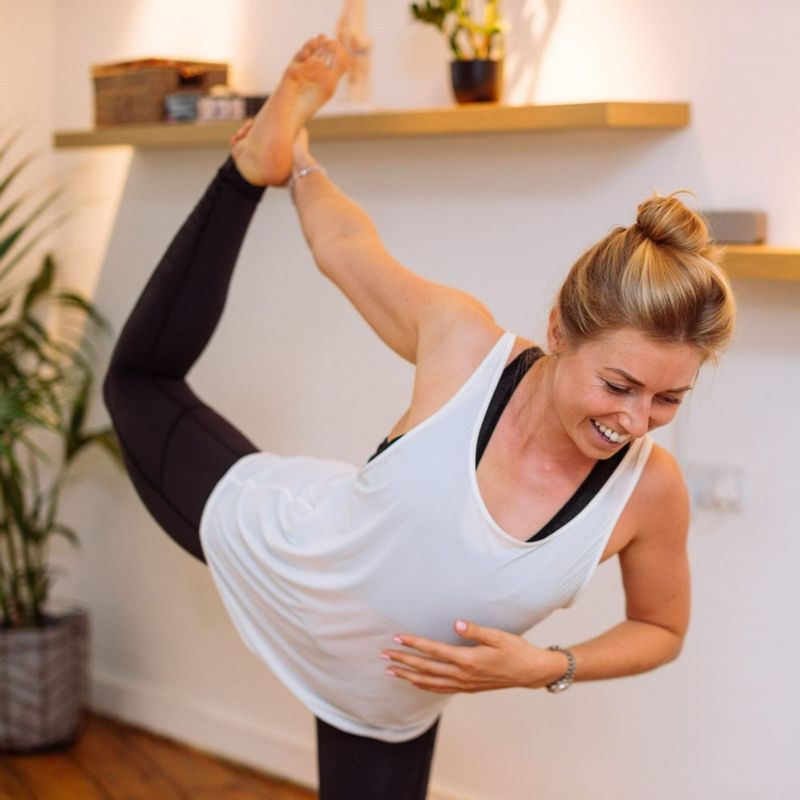How Can an Osteopath Help You With Lower Back Pain?

Lower back pain can come about as a result of many different lifestyle factors such as poor posture, frequently bending forward (usually whilst looking at our phones or laptops), heavy lifting or degenerative conditions such as arthritis. In this latest blog, I’ll detail how and when an Osteopath can help you to combat lower back pain as well as offering some helpful tips to hopefully prevent you from needing to see one in the first place!
What is Osteopathy?
Osteopathy is a gentle hands on approach to health care that looks at the body in a holistic way - diagnosing and treating a range of musculoskeletal problems from headaches to frozen shoulders, injured ankles to lower back pain.
It is built upon four pillars of belief and ‘Osteopathic Principles’ Let’s explore how they support the relief of low back pain:
The body is a unit
With this in mind, we accept that each part may affect each and every other part of the body - sometimes a slight injury to one part of the body leads to compensation elsewhere and its elsewhere that the pain actually presents. For example when you visit an Osteopath with back pain they’re going to see where the pain / problem is coming from and treat that specific area - so the problem is resolved rather than simply the pain being masked. Typical areas we might look at include:
· How are your hips from side to side?
· Is your pelvis tilting one way?
· Are your collapsing in your foot arches and therefore causing strain all the way up through your lower body?
Structure and function are reciprocally interrelated

If the structure of the body is compromised (maybe due to postural strain or compensation for a chronic injury) its quality of and ability to function will be affected - this might present as stiffness, instability or pain in motion. Likewise if a given part of the body isn’t functioning well (for instance reduced lung function and breathing mechanics) the structure of your body will adapt often lead to more uncomfortable antalgic position. For example in the case of poor lung function, we may notice rounding in the shoulders, restricted movement through your upper back and strain or stretching on your lower back. In this situation your osteopath might work to lift your shoulders back and have your spine moving more freely so that you can breathe better and deeper.
The body is its own medicine chest
Our bodies are wonderfully clever and they’re usually able to resolve nearly all but the most serious of conditions. Osteopaths will simply help to remove any restrictive barriers and stimulate your body’s own healing mechanisms. In a treatment this may look like massage and mobilisation to help encourage mobility and lymphatic circulation. They might give you exercises and stretches to enhance this healing at home too.
The rule of the artery is supreme
Healing requires a good circulation and blood supply. Trauma, acute and chronic injury can lead to compression, contraction and twisting in the tissues - and all of these inhibit blood flow. Osteopaths work to release and relieve this, encouraging circulation and flow and thus physiologic function. You can sometimes even see where an osteopath has massaged / needled or such because the skin will look red and flush - it is simply the bloody coming to heal the area your practitioner is trying to target.
Now let us talk more about back pain specifically:
I am going to talk about the most common kind of low back pain - that constant ache / niggle associated with long hours at a desk, limited movement, not enough strength and not enough mobility.
When you see an Osteopath they’re going to rule out anything nasty with questions and maybe a few medical tests. To give them a better understanding of things they might ask you how you spend your days - your hobbies, your work set up, your stress levels, your nutrition and hydration.
Physical assessment will then include moving around and performing simple exercises / stretches that will help them identify how the body is responding to your injury and where the cause may be coming from.
A diagnosis and explanation will come together, osteopaths want you to know and see where your problem lies for yourself, so that you understand how it can be fixed and how you can help support that healing (maybe with exercises, stretches or small lifestyle changes).
Treatment will incorporate a range of soft tissue techniques that will initiate the healing process. Sometimes it is simple and you may just need one or two sessions. Others times things take longer. If you have carried back pain around for 5/6 years it isn’t going to vanish in an hour unfortunately.
Something extra to keep in mind when seeing any kind of therapist for the first time with any kind of injury… The best therapist in the world usually gets an hour or so with you. Now there are another 167 hours in a week… so if you come home and forget to rehab, forget to make those small postural changes etc your healing progress is going to take more time. I can be one of the most impatient injured people out there so I share this with love!
Do I have to see a therapist?

This is a bit of a controversial point maybe and therapists reading this might not be so happy with what I am going to say but here we go anyway. If your pain is mild and your pretty sure it is just because you spend too many hours at a desk or in a car then an expensive therapist probably doesn’t need to be your first port of call. You may be able to address low level pain by considering the following:
- Can you move more? Could you squeeze in a walk at lunch time?
- How is your posture? Could you adjust it when you are sat at your desk or driving in order to take the strain of your lower back?
- Are you carrying more weight than your body would like to be? I know this is a sensitive subject but I sure know if I was carrying around extra weight all day every day I would be experiencing more back pain.
- Are you drinking enough water? This is a biggie for keeping tissues hydrated and healthy.
- Am I strong enough? Can you strengthen your core and your glutes - these have huge stabilising effect on your lower back and weakness here can be a big component of most people’s lower back pain.
Food for thought
We are all very individual beings and different forms of therapy will suit different bodies. So whilst I have spoken here about how an Osteopath can help you there are other practitioners out there. I personally always encourage people to stick with a practitioner that has worked for them in the past or is a recommendation rather than someone that has a given title.
I hope that this has shone a light on how therapists look and problems and given you more understanding of lower back pain if it’s something you struggle with! If you have any questions, I’d be happy to help, do reach out to me via the channels below!
Jess
Talk to one of our Wellness Travel Specialists on 0203 397 8891 or contact us here to discuss tailor-making your perfect wellness holiday.
|
|
Jessica Lambert is a health-conscious passionate Osteopath (M.Ost), Yoga & Pilates Teacher who loves bringing together all kinds of exercise and habits to enhance the wellbeing of others. She runs a virtual Yoga & Pilates studio 'The JL Collective' and hosts global retreats. Visit Jessica’s website here Follow Jessica on Instagram here |



